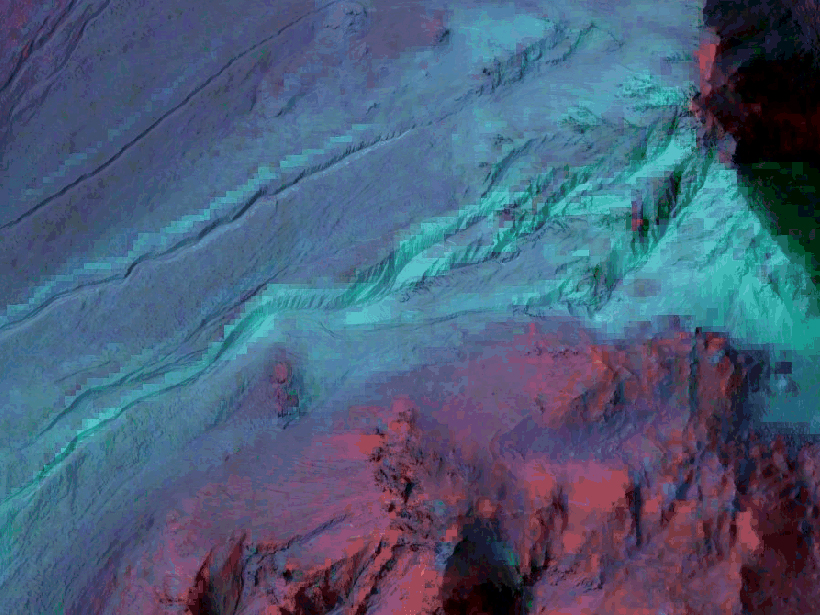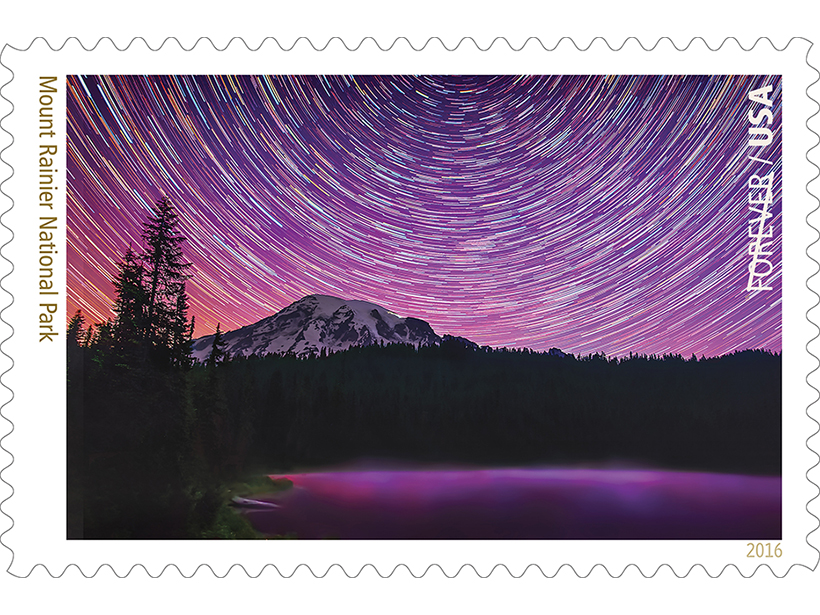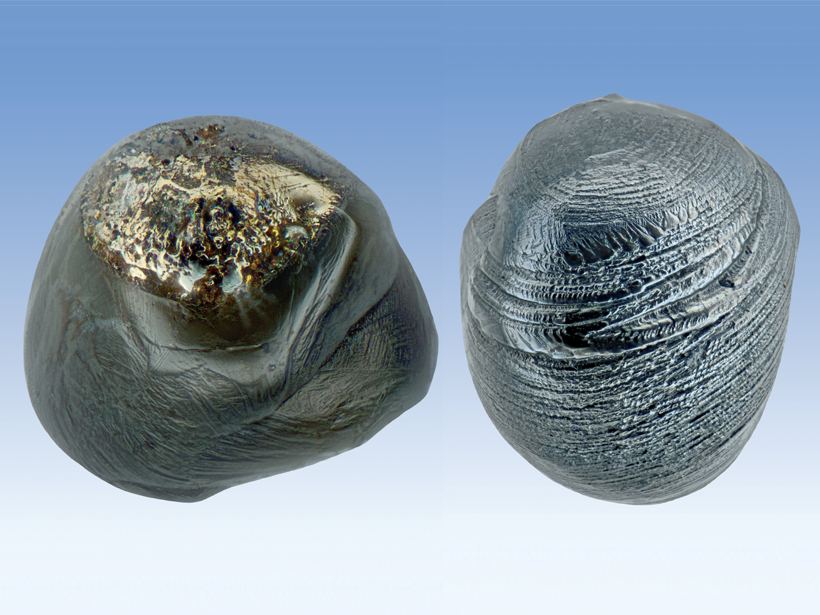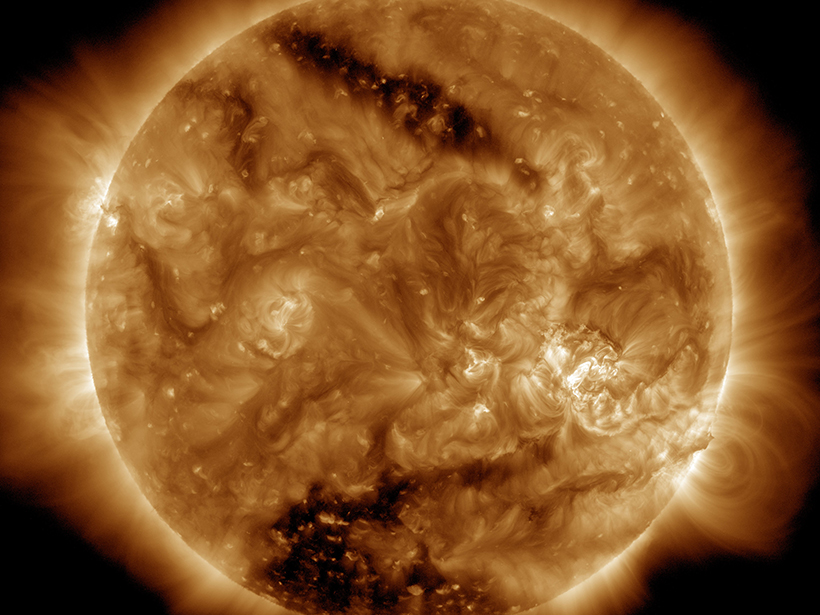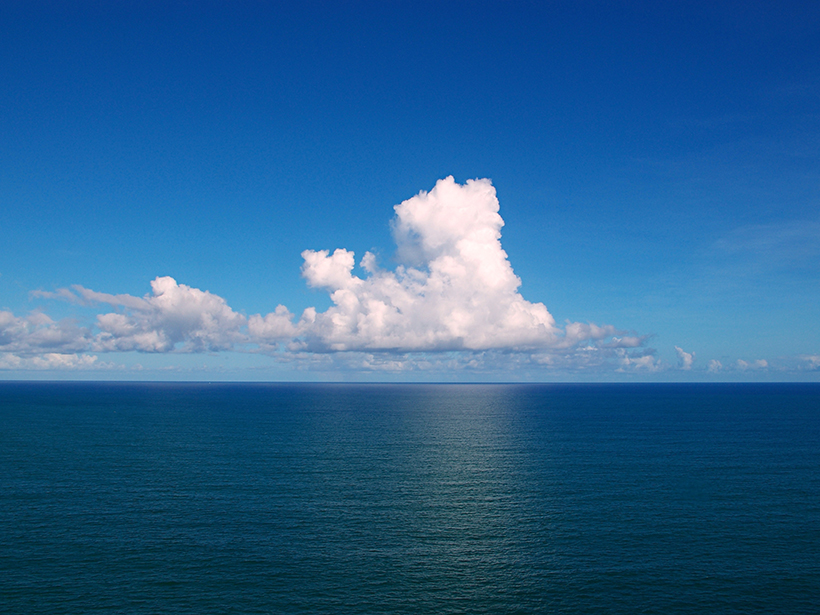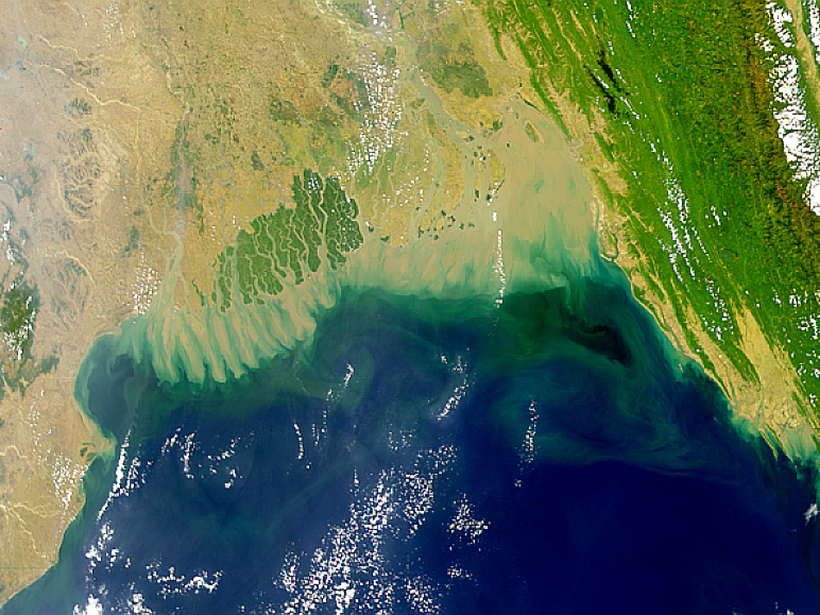New orbiter data support an important role for seasonal frost—not liquid water—in the formation of Martian gullies.
CC BY-NC-ND 2016
Stamps Celebrate National Parks on Agency's Centennial
Striking images showcase iconic and lesser known U.S. national parks, seashores, and historic sites.
Six Snapshots of Geoscience Research from National Parks
As the National Park Service celebrates its 100th anniversary, we celebrate ongoing Earth and atmospheric research made possible by conservation efforts.
Closest Ever Terrestrial Exoplanet Found, Habitability Debated
Researchers are excited about a new, potentially habitable exoplanet orbiting our closest stellar neighbor, Proxima Centauri.
Urban Micrometeorites No Longer a Myth
After sifting through urban debris for 6 years, one scientist unearthed cosmic dust—confirming a long-held myth about urban micrometeorites.
Spotting the Source of Slow Solar Wind
A new study suggests that magnetic reconnection may fuel slow solar winds, which top out at speeds below 500 kilometers per second.
Elephant Seals' Dives Show Slowdown in Ocean Circulation
Data from instruments mounted on elephant seals reveal that melting ice flushes fresh water into the Southern Ocean, suppressing an important arm of the global ocean circulation belt.
How Sea Surface Temperatures Affect an Atmospheric Phenomenon
New research sheds light on the complex interplay between the atmosphere and the ocean and how both affect the Madden-Julian Oscillation.
Scientists Map Temperature and Density in Earth’s Exosphere
Data from multiple orbiters give a clearer picture of how density and temperature interact and what that could mean for future satellite missions.
Deciphering the Bay of Bengal's Tectonic Origins
New magnetic and gravity data suggest that the boundary between continental and oceanic crust lies beneath northern Bangladesh, along the line of an Early Cretaceous spreading center.

